This week, the artist’s first major institutional exhibition in the UK opens at the National Portrait Gallery in London. Jenny Saville: The Anatomy of Painting follows the development of Jenny Saville’s visual language from the 1990s, when she first gained momentum with her degree show at the Glasgow School of Art, to her present position as one of the UK’s most prominent contemporary artists. Saville’s fierce artistic expression has and continues to redefine the way the human body is depicted and perceived.
At the centre of Saville’s work is the human body; its physicality and fluidity, imperfections and disfigurations becoming the artist’s subject matter, but also a tool towards investigating societal prejudices, taboos, and preconceptions of the past and present. Representation of the body is one of the most notable tropes in art history, accompanied by discourses ranging from those on aesthetics to the politics of space and identity, to the existential coming to terms with human transience. This subject reverberates in LYRA Collection’s commitment to nurturing a space for open conversation, informed by feminist and intersectional practices and perspectives. Through the paint brushes of Jenny Saville, alongside those of other LYRA artists, including Sarah Lucas, Christina Quarles, Alina Szapocznikow, Sylvia Sleigh, among others, the body becomes a vehicle towards societal change.
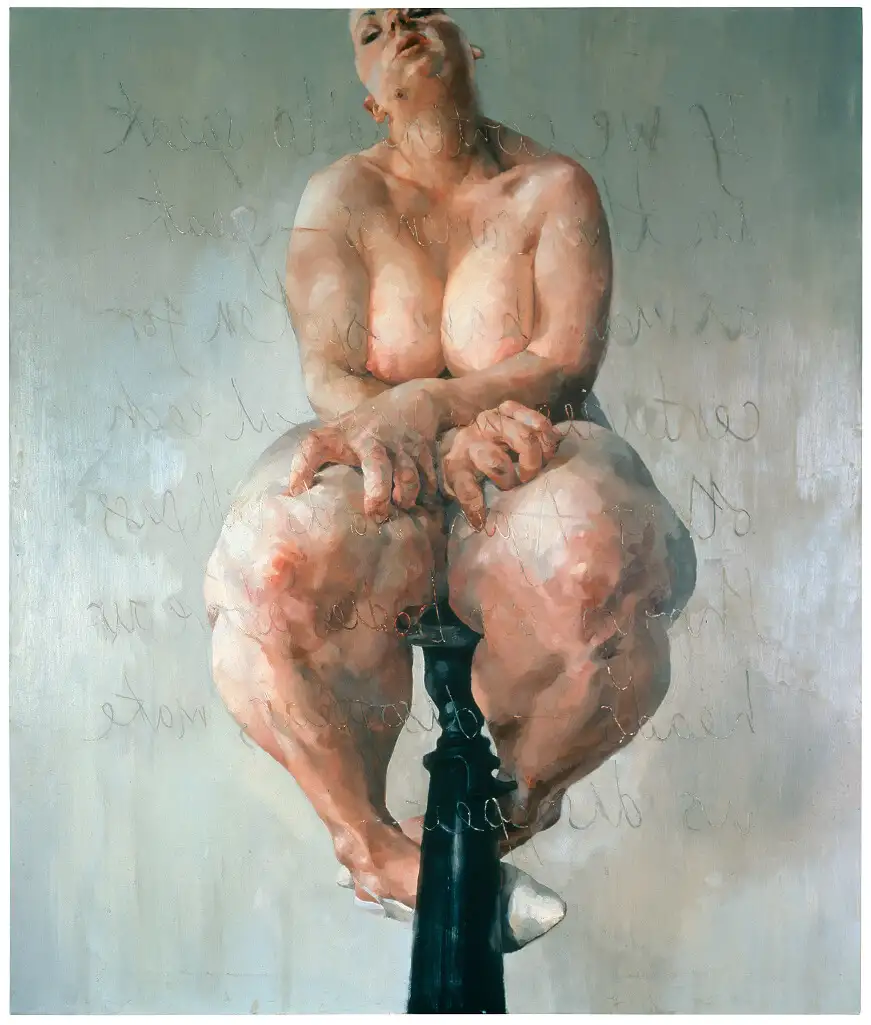
Propped, 1992 by Jenny Saville, Private Collection
© Jenny Saville, Courtesy Gagosian
Persistently implicating the viewer’s reaction and emotional response into the work, Jenny Saville speaks to an inherently human anxiety about our own corporeality. To challenge normative standards of beauty and femininity, Saville is committed to posing questions instead of providing didactic resolutions. This ethos is embodied in ‘Propped’ (1992), which was the centrepiece of Saville’s degree show that first brought her critical acclaim. The large-scale painting depicts a female nude whose legs are wrapped around a pedestal-like stool. Graffiti-like, mirrored writing is scribbled into the paint, quoting feminist writer Luce Irigaray: “If we continue to speak in this sameness – speak as men have spoken for centuries, we will fail each other.” This piece was acquired by Charles Saatchi, which led to Saville’s inclusion in Sensation, a 1997 exhibition of Saatchi’s collection at the Royal Academy of Arts. The exhibition famously defined the movement of the Young British Artists, of which Saville is a member, alongside artists such as Tracey Emin and Sarah Lucas, whose work is also present in LYRA’s collection.
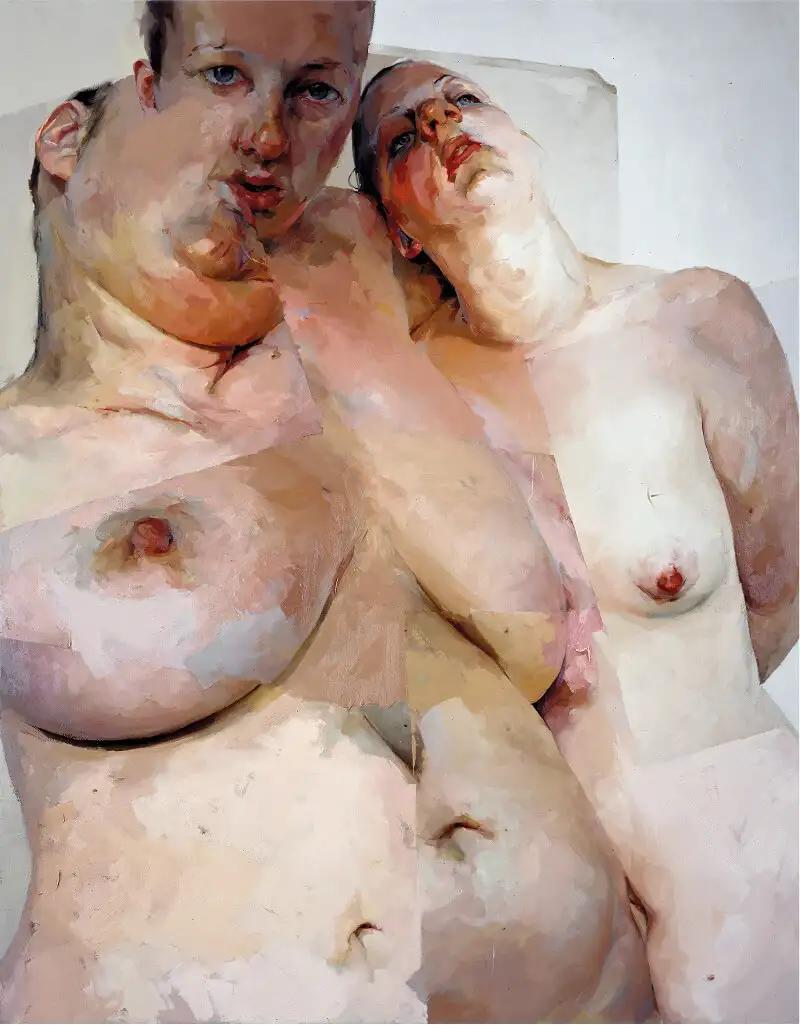
Ruben’s Flap, 1998-1999 by Jenny Saville, The George Economou Collection
© Jenny Saville, Courtesy Gagosian
Informed by the long art historical tradition of figurative representation of the naked female form, Saville equally draws on personal experiences, such as seeing canonical art of Titian and Tintoretto during her childhood travels to Europe. Saville’s work references the legacies of artists such as Rembrandt, Francis Bacon, and Lucian Freud, which are entwined with her fascination with abstract artists, including Willem de Kooning and Cy Twombly. The result is a unique visual language that honours the traditions of figurative and abstract movements of the past, while also collapsing them in on themselves. For the artist, figuration embodies vagueness, a sense of conceptual opacity that acts as resistance to dominant worldviews. Fusing the language of figuration and abstraction, Saville’s work speaks in a novel, inherently and inevitably human expression. In place of compromises comes a tension that arises from the artist’s commitment to the right to the audacious. Unlike her male antecedents, Saville conveys what it feels like to live in a body, as opposed to just look at it.
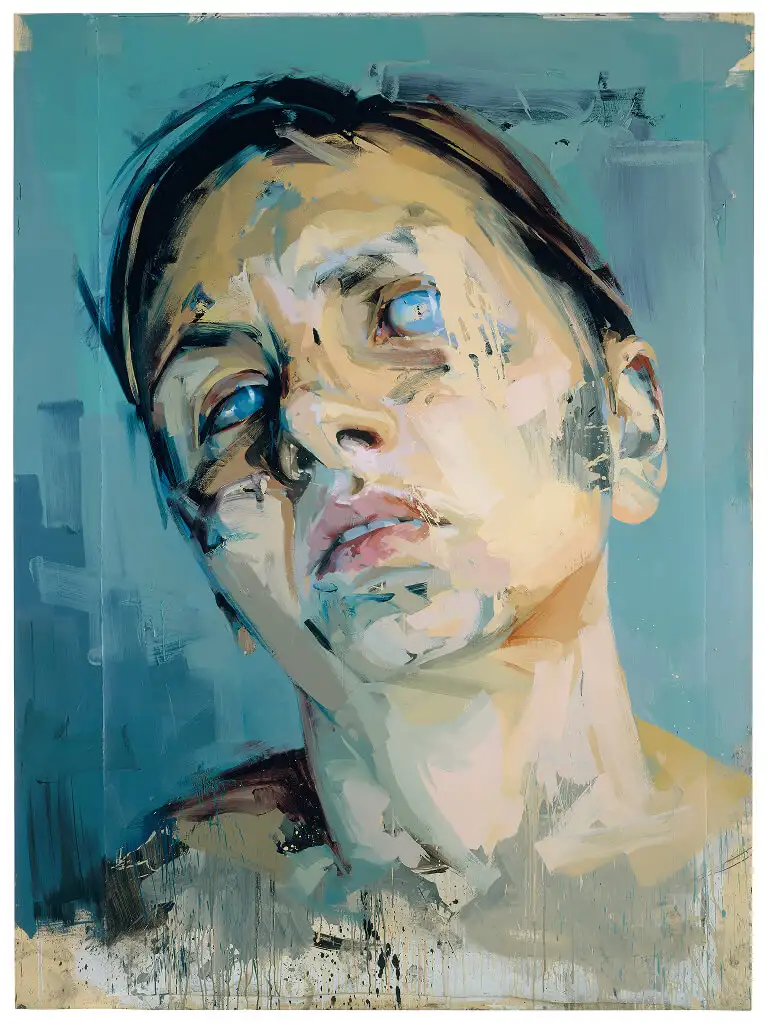
Rosetta II, 2005-2006 by Jenny Saville, Private collection
© Jenny Saville, Courtesy Gagosian
The resurgence of figurative painting in recent years posed the question of what it means to paint representation in the time of highly saturated and fast-paced image culture that contextualises the present moment. With a responsibility and a desire to revise art history, heavily dominated by Eurocentric and male perspectives, female figurative artists conceive of a space within which personal and intimate narratives bring forth a socio-political radicality. And so figurative painting, once patriarchal, is no longer, and the focus on the individual softens into that of the collective.
In Saville’s large-scale work, oil paint and flesh become interchangeable. The outside and the inside of the body, the mass, fluidity, saturation, and substance translate into washes of colour, contained and at once liberated by the artist’s brushstrokes. Saville’s practice is informed by her investigations into medical illustrations, anatomy, and medical pathologies. During her studies at the Glasgow School of Art, she spent a term at the University of Cincinnati in 1991, where the opportunity to observe a New York City plastic surgeon materialised. Reminiscent of many old masters, such as Rembrandt, attending autopsies in search of understanding of the human body, this experience was pivotal in the artist’s anthropological interest in and insight into the discordance between an idea of ‘normality’ and the reality of being human.
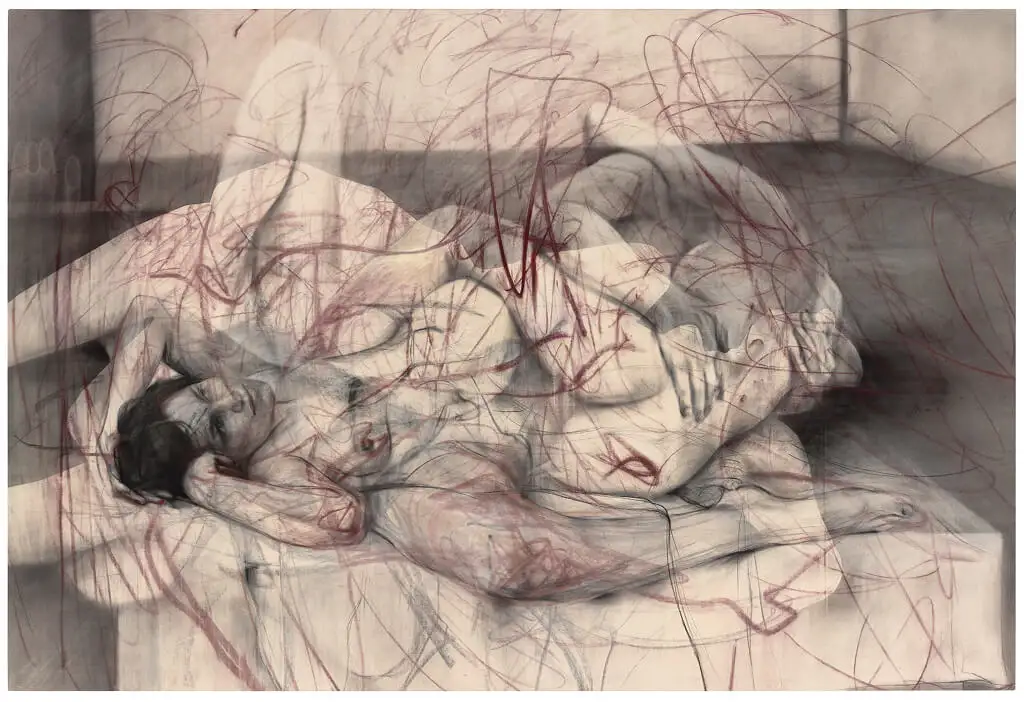
One out of two (symposium), 2016 by Jenny Saville, Private Collection
© Jenny Saville, Courtesy Gagosian
Becoming a mother led to a new development in Saville’s practice, where depicting one set of outlined limbs was no longer enough to capture the body’s movement. Subsequent body of work – such as ‘One out of two (symposium)’ (2016) and ‘Compass’ (2023) which are on view at the National Portrait Gallery – engages with the technique of pentimenti, where the compositional elements that the artist painted over remain visible. The result is a complex yet translucently fluid tangle of bodies, limbs, and gestures. Here, the physiological impossibility of such human configurations in real life only makes the painting more real, and its humanness more present and alive.
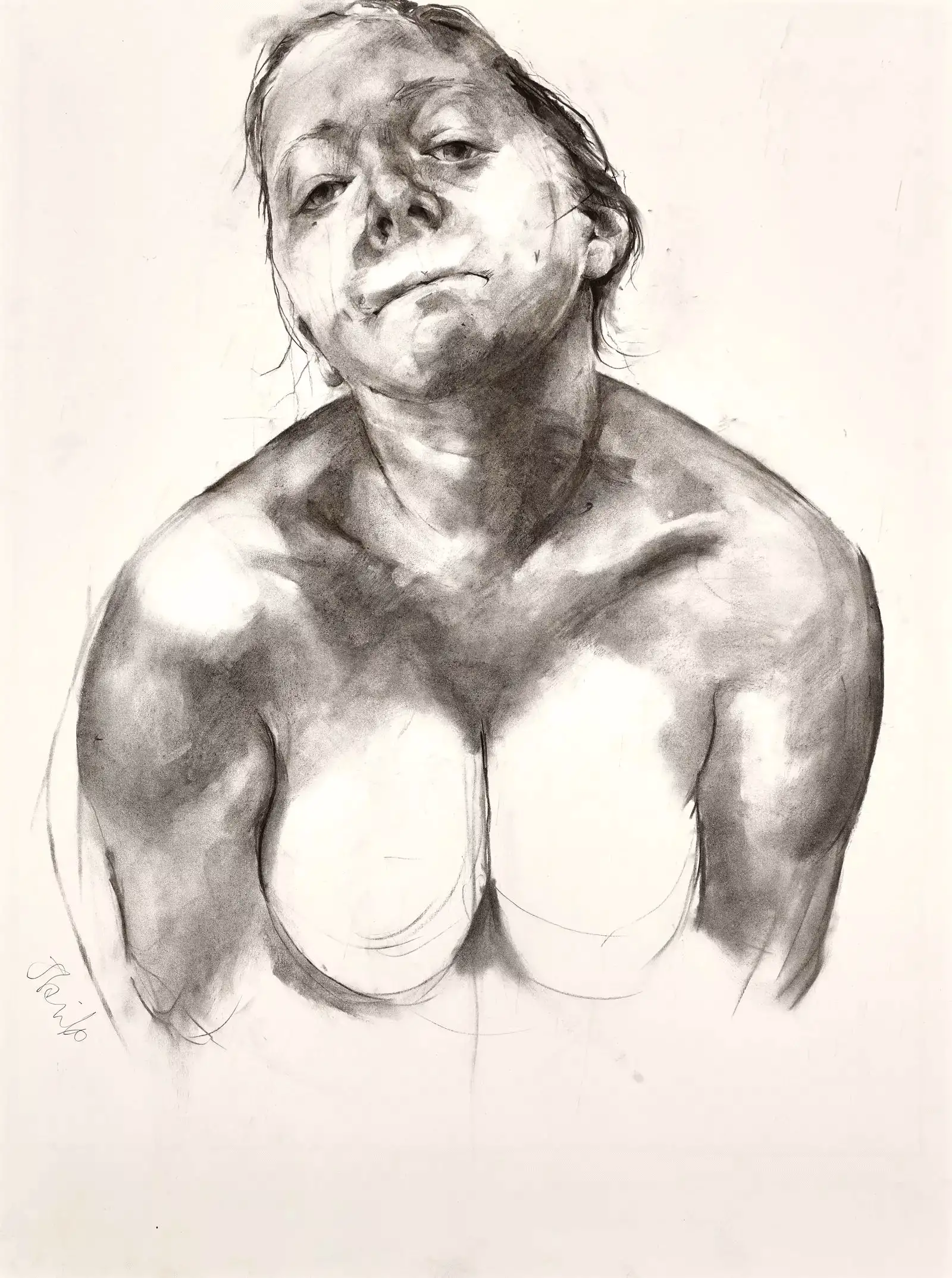
Self Portrait, 1992 by Jenny Saville, LYRA Collection.
Courtesy, LYRA Collection
Parallel to her oil paintings, Saville also works in drawing, a medium through which she articulates a space for artistic experimentation. An early example is ‘Self-Portrait’ (1992), which was part of her career-defining degree show at the Glasgow School of Art, which LYRA is proud to hold in its collection. Here, Saville’s own gaze is directed at the viewer and feels both provocative and resigned, focused and introspective. The piece is emblematic of the artist’s skilful use of distance and empathy, the combination of the two resulting in an unprecedented emotional impact. Over the years, Saville continued to practice in charcoal, pastel, and pencil drawings, notably in her series on the subject of pregnancy and motherhood, which is on view as part of The Anatomy of Painting exhibition.
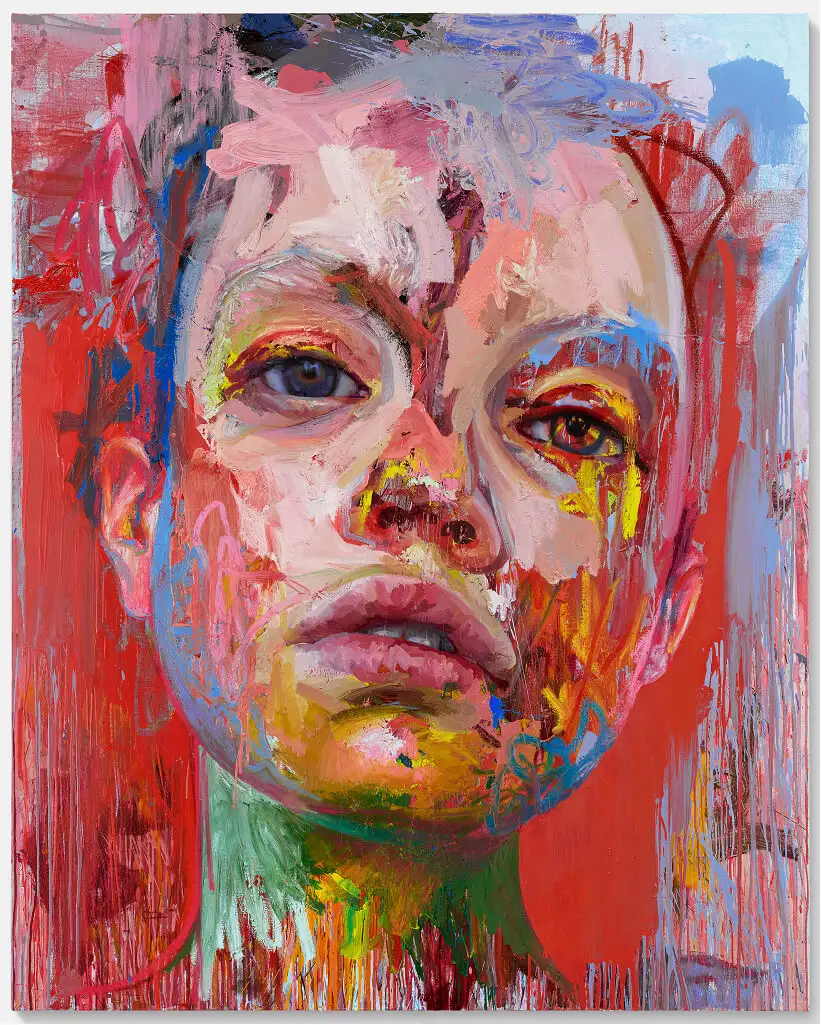
Rupture, 2020 by Jenny Saville, Private Collection
Continuously developing, changing, and fusing, Saville’s practice in itself is reminiscent of a human body: never static yet always retaining its essence, with life at its core. The endurance and strength of the artist’s painterly language implicates not only history and societal undercurrents, but the very emotive instant when the viewer forms a relationship with her work.
Jenny Saville: The Anatomy of Painting opens on 20 June 2025 at the National Portrait Gallery, London, and will be on view until 7 September 2025.